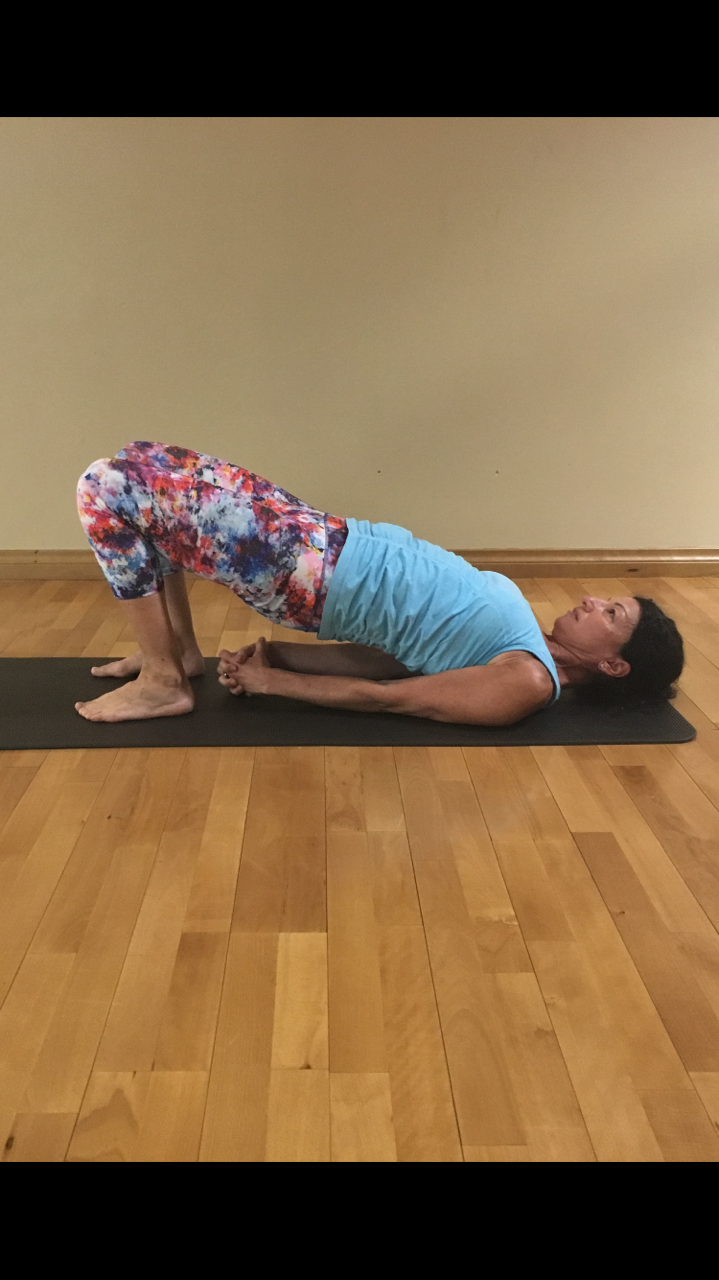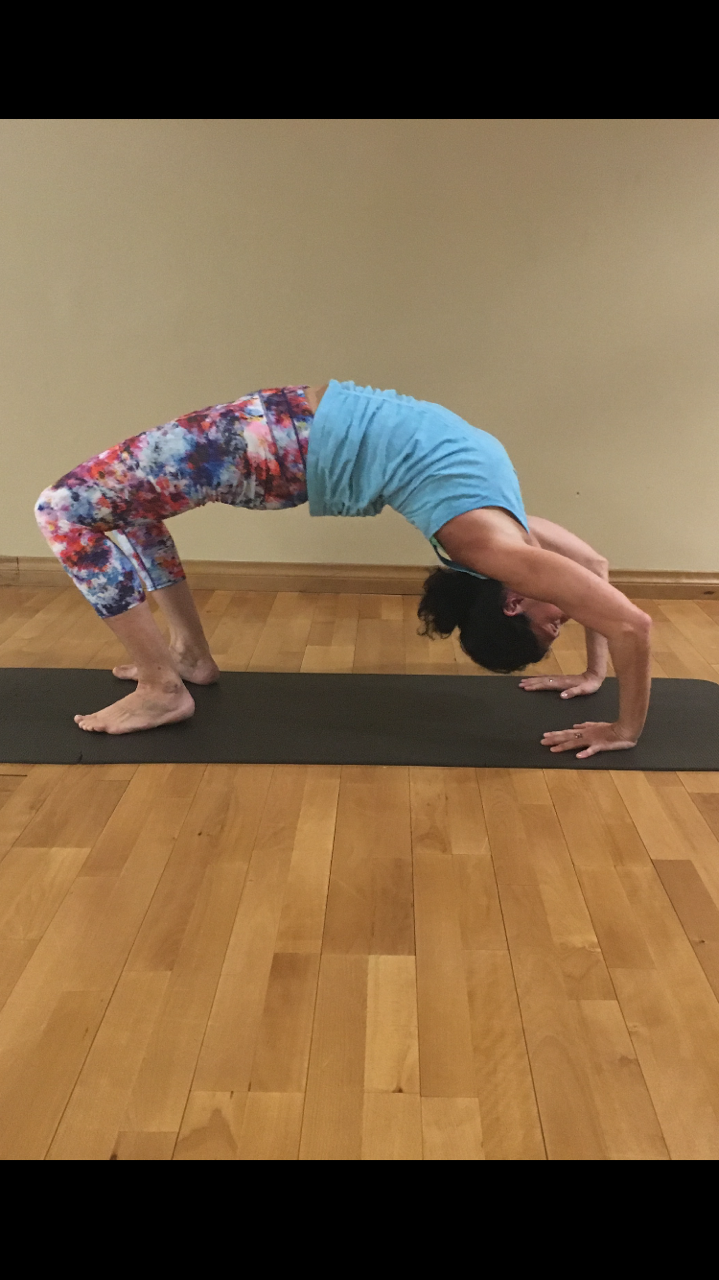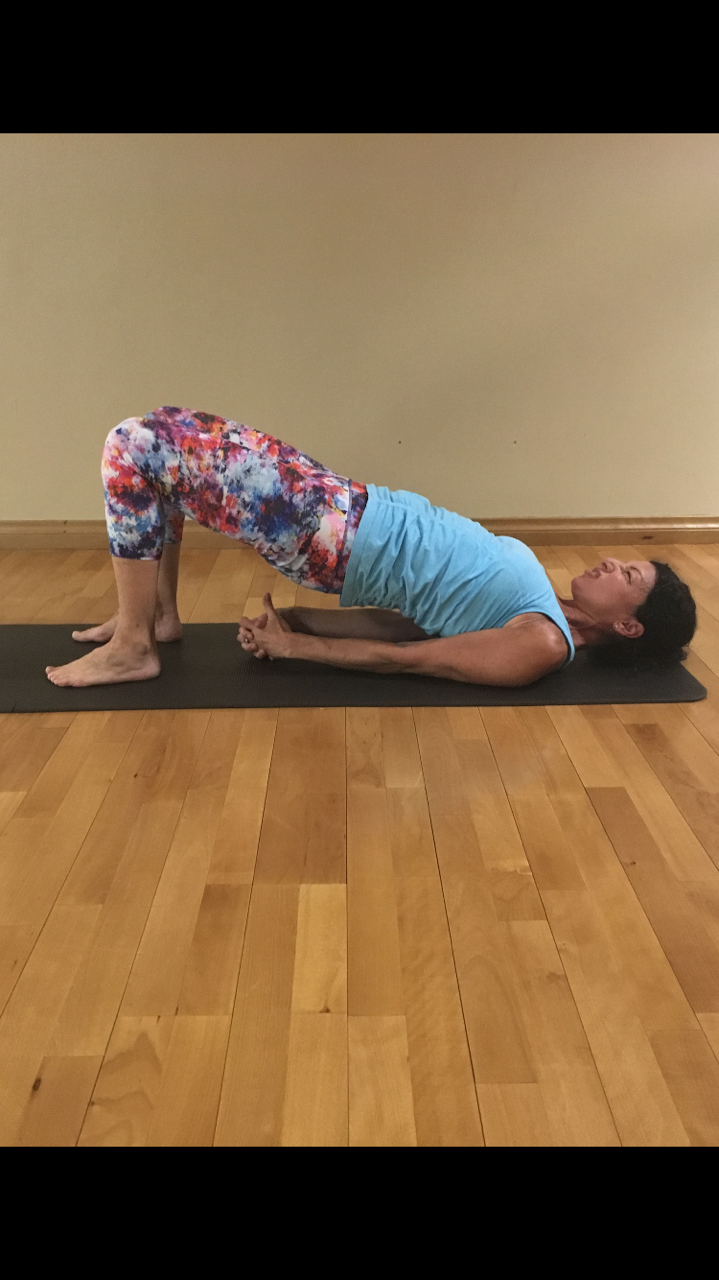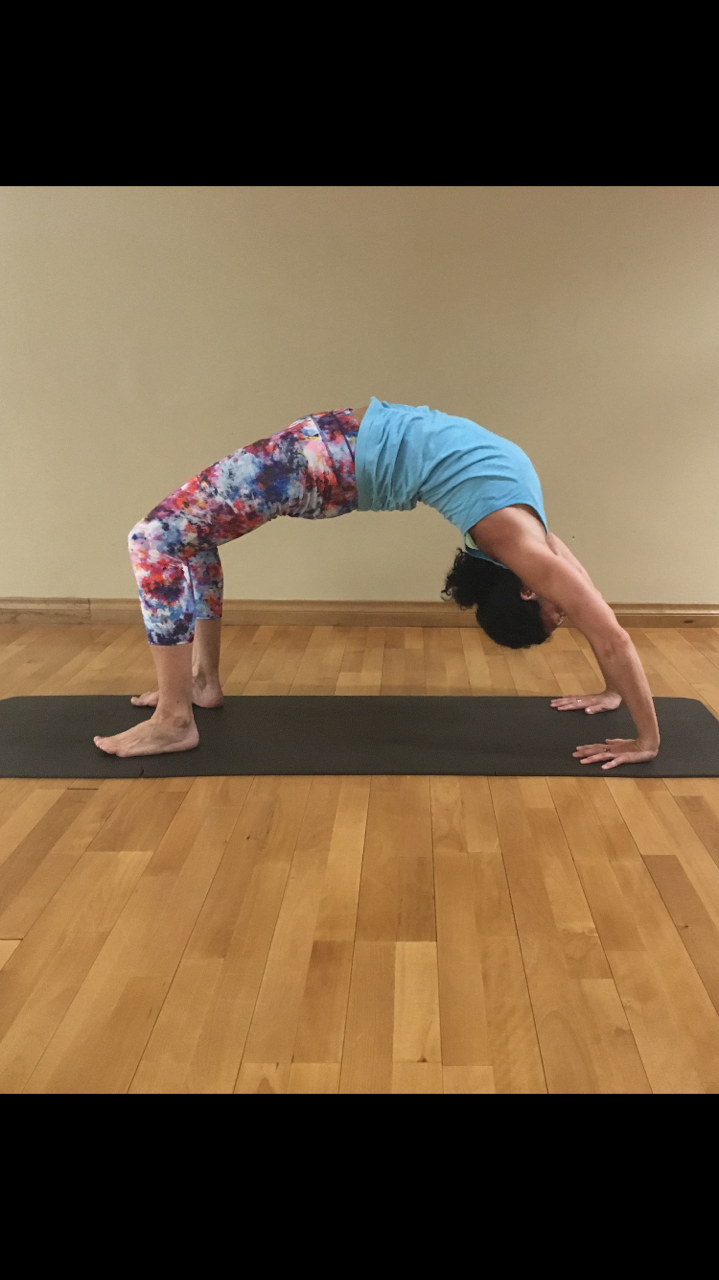As teachers, what we say has a huge impact on the actions our students will take in class. This is why our words and the choice of our words makes a huge difference to the experience students will have. Sometimes there are cues given that might not make the most sense but are carried on from teacher to teacher. Certainly, as we all learn more about the anatomy piece of the practice, some of what we used to say might not make sense anymore. One of the cues I’ve found that falls into this category is the cuing to the feet in Bridge Pose.
Bridge Pose, in a vinyasa or flow class, is typically used as a precursor to Wheel Pose. The hamstrings and the gluteus maximus muscles are used for the power needed to lift the hips off the floor. The hips are in extension, providing an excellent counterpose to all the flexion we do all day while sitting. However, in order to maximize the power needed to lift the hips and extend them, stretching the psoas muscle, we need to stack the knees over the heels. Many times, students hear in preparation for coming into Bridge, “you should be able to reach your heels as you lay on the floor.” Â I often see students, as they are preparing to come up into Bridge, reaching their fingers out, trying to touch their heels and pulling their heels in, closer to their hips.
What this tends to do for most students is it actually decreases what I like to call their “push off power” because it results in the heels being behind the knees. It looks something like this:

You can see here that my heels are behind my knees. Because my knee is not directly over my heel, I lack the proper alignment to help me lift off the floor. This also results in the knee jutting past the heel which only increases pressure on the kneecap.
This situation only worsens if I use this same alignment to come up into Wheel Pose:

I see this all the time. There is absolutely no amount of pushing into the floor that will get a student up comfortably into Wheel. All that will happen here is the student will push right into the shoulders.
In order to cue students properly, suggest that they stack their knees over their heels. Better yet, suggest that, but then explain that they should feel like they can push up with confidence and with a solid base. That way, they can shift their feet until they feel steady rather than following our instruction to the letter. The result may look something like this (minus the funny face.. I have no idea what I was doing here!)

Using this alignment in Wheel, the push up power is much better:

There is much more involved in cueing these two poses correctly and there is a great deal going on from a muscular standpoint. But from the basic premise of setting up the position of the feet, perhaps you may find this exploration helpful.
Whatever we say as we teach should come from knowledge we may have garnered from others but it’s knowledge that we truly understand and own rather than just something we’re saying because it’s something we’ve heard. This takes first absorbing the information in training, applying it in practice, answering questions from students, doing further reading and training and applying it over and over again. This is of course, a life long process but this is part of the joy of teaching!

You’re columns are always insightful. I immediately share on our studio’s Teacher page.
Jay, thank you so much for your comment! I am so glad you found it helpful. By the way, if you like these posts, did you see I just released an e book on the Key Aspects of Anatomy for Yoga Teachers? It’s on Amazon and i tunes right now. I can email you the link if you want or you can get the link on my website. Thanks! Karen